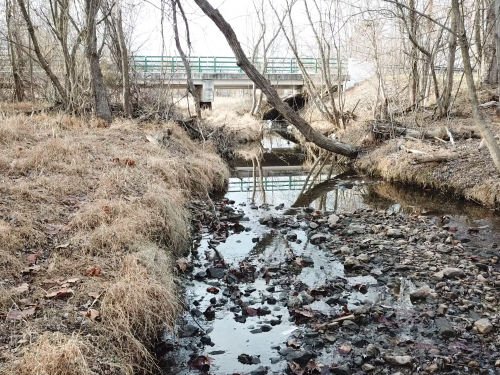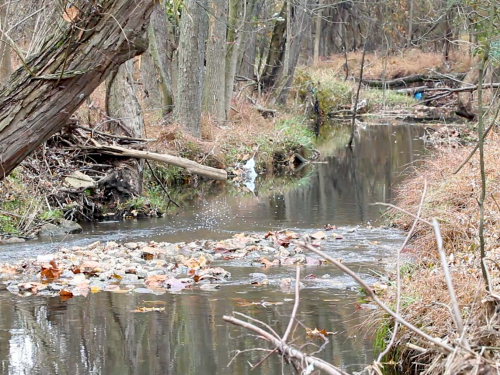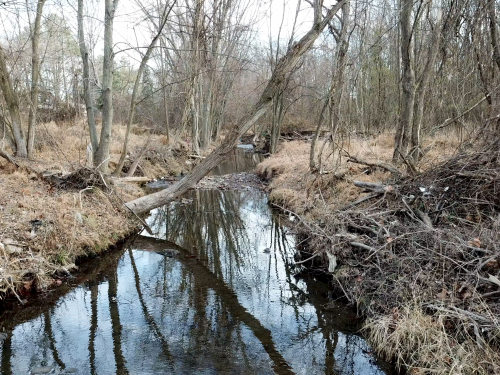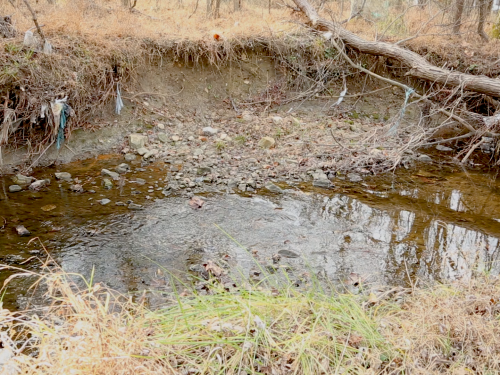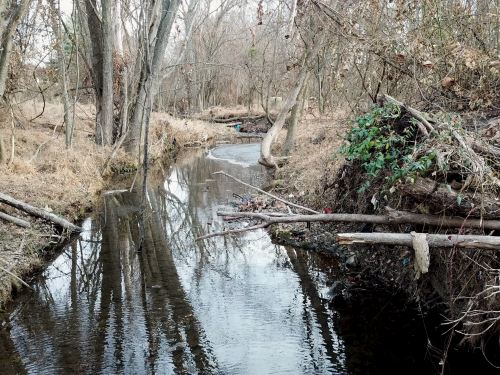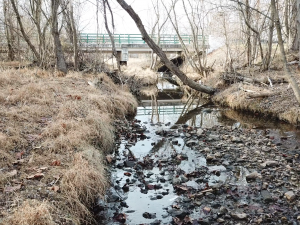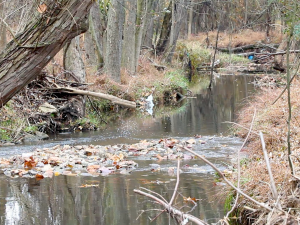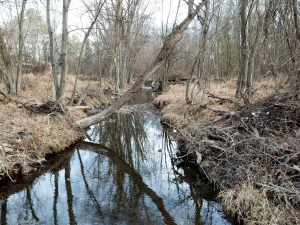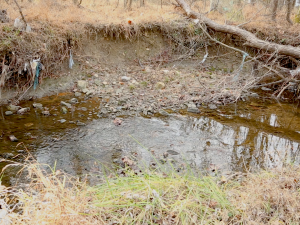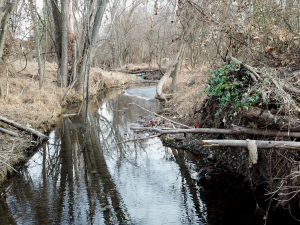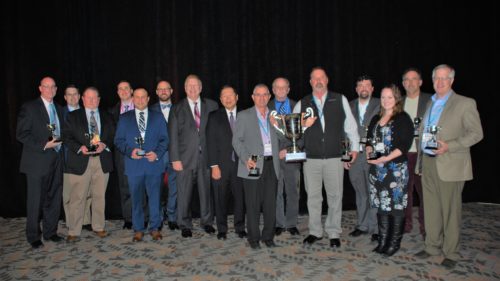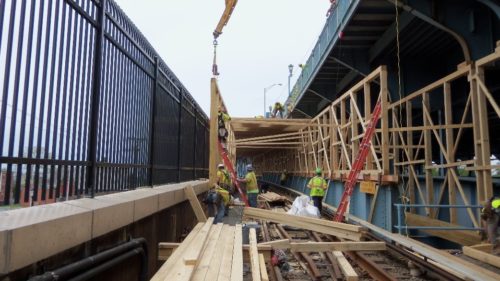Scotts Level Branch Restoration
Scotts Level Branch Restoration
JMT designed two stream restoration projects totaling approximately 9,400 feet of Scotts Level Branch and its tributaries and outfalls. Our team restored more than 20 acres of floodplain wetlands, effectively meeting Baltimore County’s goal for the total maximum daily load (TMDL) for sediment and nutrient loading reduction. These projects are some of the first stream restorations in Maryland with climate resiliency as a primary goal.
Our team first completed a design for a segment near Marriottsville Road, restoring 1,500 feet of stream and multiple stormwater outfalls between dense residential developments. For this project, we used a hybrid floodplain restoration and natural channel design approach to restore a floodplain that was heavily impacted by development, urban fill, and historic unsustainable land uses, such as deforestation and dam building. JMT proposed a combined stream and wetland system to provide aquatic habitat, process nutrients, and sequester carbon and sediment. The team provided all aspects of stream restoration design services, including natural resource studies, permitting, and modeling, which culminated in contract documents.
Scotts Level Park was the second – and largest – restoration segment in the project, with a footprint of approximately 60 acres and an estimated stream length of 7,900 feet. This stream reach was challenging in that it had multiple utilities, sections of concrete channel, and various constraints that required a feasibility model of ecosystem restoration design. JMT provided a complete analysis so the County could consider multiple design alternatives. The team provided a conceptual design for the entire reach, moving the first phase of the project to full design.
In addition to the final design scope, JMT provided a TUFLOW 2-D model for hydraulic analysis validation, which modeled shear stress at specific locations and weighed precise design scenarios at various constraints. This process decreased the need for hard armoring and reduced construction costs. The team included a climatic resiliency analysis of each design option, allowing our client to select alternative techniques that work with a changing climate. We selected plant species based on ecological indicators, such as anticipated shifts in species composition due to changes in temperature and precipitation, while our hydraulics design accounted for anticipated changes in flood frequency.
